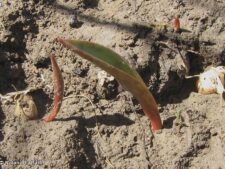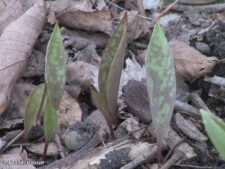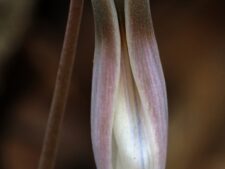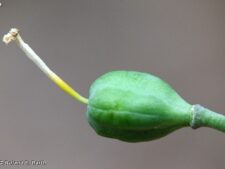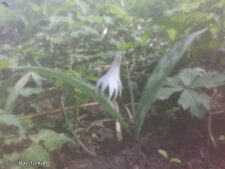
WHITE FAWN-LILY
Erythronium albidum
LILY FAMILY (Liliaceae)
 Identification
Identification
- Flowering time - April, May
- Common in ravines, hollows, upland woods
- Before flowering - colonies of sword shaped, often mottled leaves
- Nodding flower with 6 tepals (3 petals and 3 identical sepals)
- Flower often partially or completely closed
This native perennial has an elegantly distinctive flower. Single sword-shaped leaves, up to 6 inches long, emerge from bulbs in colonies starting in late March (B,C). By the 4th year two leaves emerge along with a single nodding flower on a leafless stalk (D,G). The leaves are usually mottled with brown. The 6 white tepals (3 lance-shaped petals and 3 identical sepals) bend backwards when fully open to expose bright yellow stamens and a single white pistil (A).
Found in moist woodlands, flowering in April and early May. By early May, the fertilized ovary with style can occasionally be seen (F). Emerging leaves are commonly seen in the moist ravines, hollows and upland woods of Fontenelle Forest and Neale Woods, but flowering plants are less common and in some years hard to find.
Other common names include Dog’s-tooth-Violet, White Dog’s-tooth-Violet and Trout Lily.
The content of NatureSearch is provided by dedicated volunteer Naturalists of Fontenelle Forest who strive to provide the most accurate information available. Contributors of the images retain their copyrights. The point of contact for this page is: Roland Barth.

